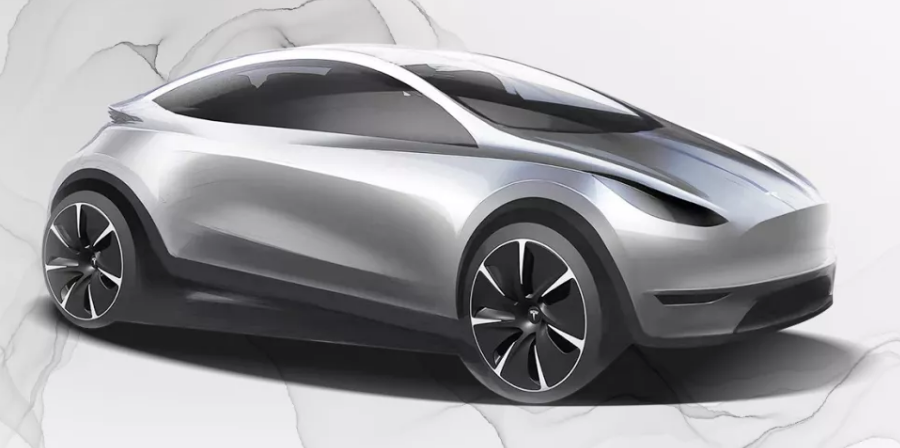I've had a chance to sift through the ARK model and wanted to share some of my reactions. Many of these things have been called out on Twitter, some of these comments here as well, so may not be groundbreaking new information for many here. That said, hoping that synthesizing these in to a single post may be of use to many in this community. For reference:
---
Below are my observations and comments on some specific assumptions or model details that I personally found interesting:
- ARK's Price Model: ARK’s Price Target for Tesla in 2025 is $3,000 Per Share
- ARK's GitHub Data Model (includes their old models as well): ARKInvest/ARK-Invest-Tesla-Valuation-Model
---
Below are my observations and comments on some specific assumptions or model details that I personally found interesting:
- The model assumes MAX 25% market share in any individual segment, which seems entirely reasonable. The one aggressive assumption is the addition of M-2/A and a "Neighborhood EV" ("N-EV") which both have extremely large addressable markets (40M and 100M respectively). In other words, a lot of the extremely high price scenarios have Tesla getting a fair chunk of both of those markets.
- Assumes M-3 ASP of $50k, M-Y ASP of $53k, and C-TRUCK of $55k. M-3 seems high, C-TRUCK seems low; modifying any of these doesn't materially change bullish outcomes given the potential distributions skewing to M-2/A or N-EV, but it does increasing some of the bearish outcomes given more of those models skew towards M-3, M-Y, and C-TRUCK.
- The highlighted bull case scenario ($4k) assumes 5M units produced/sold in 2025 with an overall ASP of $38k. This begins to show the optionality at Tesla's disposal. Tesla may never need to produce an N-EV or M-2/A, but can keep pushing cost and price of M3/MY lower and achieve a similar margin mix and ultimately valuation.
- Ignores Energy; Ignores Solar; Ignores Service; Ignores SaaS (incl. Dojo); Ignores Licensing; Ignores Credits; Ignores SEMI. In other words, this is a very simple model focused solely on Automotive in most of the model outcomes with Ride Hail / Robotaxi pushing the highest model outputs.
- Assumes Tesla continues with debt/equity raises to fund factory buildouts. Arguably they may not need to given their operating leverage, the current war chest (enough cash to build another 10 GFs), and BTC. This would impact operating margin calculations, which would also boost valuations.
- Assumes a 70% loss ratio on insurance. This is fairly high considering the argument that Tesla's would be orders of magnitude less likely to have accidents and Tesla would be much better equipped to repair their vehicles relative to a third party insurer (i.e., lower cost to settle claims). That said, this is not a material driver to valuation.
- The outlier bull cases (e.g., 20k+ / share) have assumptions of 15M+ units sold in 2025; likelihood of achieving that is quite low based on what we know today (e.g., they have a $22k price target scenario where Tesla sells 66M units in 2025). So, take the outliers with grains of salt as they are in fact very extreme outcomes. They do however show Tesla's ultimate potential if world domination was on the roadmap, but these would be major deviations from the 5-10 year Automotive plan we have heard from Tesla today.
- Combing through their simulation outputs and you can see that several very conservative outcomes can still reach or surpass their bear case assumptions (e.g., 0% ride hail or autonomous fleet, 40% margins, 6M units sold, $9k/unit capital efficiency, 13 enterprise multiple = $1,300/share) (e.g., 0% ride hail or autonomous, 48% margins, 5.7M units sold, $4k/unit capital efficiency, 13 enterprise multiple = 1,350).
- Point made by Meet Kevin in one of his latest videos, but worth reiterating,
ARK is assuming a very low terminal Enterprise Multiple. ARK is using a 13 multiple in all scenarios for Automotive and Robotaxi and 10 for insurance. This multiple is effectively lower than any average Enterprise Multiple as at 12/31/2020 for Large Cap US Companies (telcos and utilities are both ~14; source: EV/EBITDA (Enterprise Multiple) by Sector/Industry 1995 – 2021) and would be roughly the average across all large caps in 2017/2018/2019. Pushing these multiples to more reasonable growth company multiples (20+), which considering Tesla's growth should continue through 2030 - would be reasonable, and you could very quickly more than 2x all the share price outputs. This again confirms how much margin of error Tesla has to still achieve these valuations. For instance, it may never hit 40% margins (say it plateaus at 30%), but still reach the expected ($3k/share) valuations if it hits 6M units in 2025 and is still on track for 50% CAGR through 2030, thus demanding a higher multiple. All while ignoring Ride Hailing and Robotaxi entirely.
- Ending with a tangent, I absolutely love the fact that ARK is willing to publish not only their research notes for free, but equally make available their underlying data model. This is completely against the grain in the investment world and truly shows how disruptive they are to their own industry sector. The model is not only simple (arguably oversimplified), but extremely flexible and allows you to play with whichever variables you believe are the most relevant.




